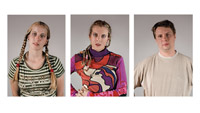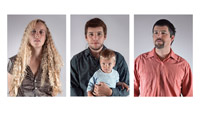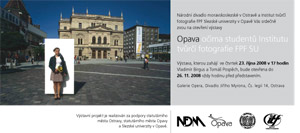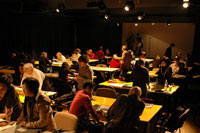Archiv
únor 2021
říjen 2020
září 2020
srpen 2020
leden 2020
prosinec 2019
červen 2019
prosinec 2018
září 2018
srpen 2018
květen 2018
duben 2018
březen 2018
prosinec 2017
listopad 2017
říjen 2017
září 2017
srpen 2017
červenec 2017
červen 2017
květen 2017
duben 2017
březen 2017
únor 2017
leden 2017
prosinec 2016
listopad 2016
říjen 2016
září 2016
srpen 2016
červen 2016
květen 2016
duben 2016
březen 2016
únor 2016
leden 2016
prosinec 2015
listopad 2015
říjen 2015
září 2015
srpen 2015
červenec 2015
červen 2015
květen 2015
duben 2015
březen 2015
únor 2015
leden 2015
prosinec 2014
listopad 2014
říjen 2014
září 2014
srpen 2014
červenec 2014
červen 2014
květen 2014
duben 2014
březen 2014
únor 2014
leden 2014
prosinec 2013
listopad 2013
říjen 2013
září 2013
srpen 2013
červenec 2013
červen 2013
květen 2013
duben 2013
březen 2013
únor 2013
leden 2013
prosinec 2012
listopad 2012
říjen 2012
září 2012
srpen 2012
červen 2012
květen 2012
duben 2012
březen 2012
únor 2012
leden 2012
prosinec 2011
listopad 2011
říjen 2011
září 2011
srpen 2011
červenec 2011
červen 2011
květen 2011
duben 2011
březen 2011
únor 2011
leden 2011
prosinec 2010
listopad 2010
říjen 2010
září 2010
srpen 2010
červenec 2010
červen 2010
květen 2010
duben 2010
březen 2010
únor 2010
leden 2010
prosinec 2009
listopad 2009
říjen 2009
září 2009
srpen 2009
červenec 2009
červen 2009
květen 2009
duben 2009
březen 2009
únor 2009
leden 2009
prosinec 2008
listopad 2008
říjen 2008
září 2008
srpen 2008
červenec 2008
červen 2008
květen 2008
duben 2008
březen 2008
únor 2008
leden 2008
prosinec 2007
listopad 2007
říjen 2007
září 2007
srpen 2007
červenec 2007
červen 2007
květen 2007
duben 2007
březen 2007
únor 2007
leden 2007
prosinec 2006
listopad 2006
říjen 2006
září 2006
srpen 2006
červenec 2006
červen 2006
květen 2006
duben 2006
březen 2006
únor 2006
leden 2006
prosinec 2005
listopad 2005
září 2005
červen 2005
květen 2005
duben 2005
březen 2005
únor 2005
leden 2005
prosinec 2004
listopad 2004
říjen 2004
září 2004
srpen 2004
červenec 2004
červen 2004
duben 2004
únor 2004
leden 2004
prosinec 2003
listopad 2003
říjen 2003
září 2003
srpen 2003
červenec 2003
červen 2003
květen 2003
duben 2003
březen 2003
únor 2003
leden 2003
prosinec 2002
listopad 2002
říjen 2002
září 2002
červenec 2002
červen 2002
15/10/2008
Barbora a Radim Žůrkovi Potomci / Nevidomí
 |
Dům umění v Opavě a Institut tvůrčí fotografie FPF
Slezské univerzity v Opavě Vás srdečně zvou na zahájení
výstavy v Kabinetu fotografie Domu umění v Opavě.
Barbora a Radim Žůrkovi
Potomci / Nevidomí
www.zurkovi.com
Výstavu zahájí v úterý 21. 10. 2008 v 17. hodin Mgr. Jiří Siostrzonek, Ph.D. Výstava, která se uskuteční za finanční
podpory Ministerstva kultury ČR, bude otevřena do 23. 11. 2008 od úterý do neděle 10 – 17 hodin.
Dům umění, Pekařská 12, Opava, tel.: 553 712 231, bludny.kamen@opava.cz, www.sca-art.cz/duopava, www.itf.cz
 |
 |
Barbora a Radim Žůrkovi: Potomci / Nevidomí
Kabinet fotografie Domu umění v Opavě, Pekařská 12, Opava, 21. 10. – 23. 11. 2008, otevřeno út-ne 10-17 hodin.
Výstavu pořádá Institut tvůrčí fotografie FPF Slezské univerzity v Opavě. Zahájí ji v úterý 21. 10. 2008 v 17 hodin Jiří Siostrzonek. Kurátor Vladimír Birgus.
Autoři o svých fotografiích:
Potomci
Počítačovou montáží dvou portrétů (vlevo autoportrét matky - vpravo zástupný otec) jsme vytvořili fiktivního potomka (uprostřed) ve věku rodičů. Spojením povahových rysů, které se odráží ve tvářích matky a otce, vznikají lidé s vlastní osobností. Přímým pohledem se snaží o své sebezhmotnění a útokem na podvědomí žádají o svou existenci. Počítačvá montáž nám posloužila jako prostředek k vytvoření zvláštní situace, která v normální realitě nemůže vzniknout. Matka i zástupní otcové z řad kamarádů tak mohli vnímat zvláštní pocit při pohledu na své neexistující děti. Téměř všichni pak potvrdili sympatie a určitou sounáležitost vyvolanou mystifikací vlastního podvědomí. Jako manželé jsme se snažili také o konstrukci podoby naší právě narozené dcery, čímž vzniká možnost po dvaceti letech porovnat pravého a fiktivního potomka.
Nevidomí
Vše co vidí, je tma. Veškeré vizuální představy jsou založeny na hmatové, zvukové a pachové informaci. Funkce jejich očí je výrazně snížena, ne však nulová. Řeč je o nevidomých, lidech žijících mezi námi. O lidech s obrovským handicapem. Přesto, že při pozdravu často řeknou: “Rád tě vidím!”, skutečnost je taková, že o zrak přišli. I když hledáme cesty jak jejich život ulehčit a sofistikovanými prostředky se je snažíme integrovat do společnosti, jejich problém nezmizí.
Na fotografiích se představují zcela odkryti, bez potřeby svůj úděl jakkoli zlehčovat. Promlouvají o tom, čeho se museli vzdát a na co se pokouší nemyslet. Řeč jejich očí nevídáme často, ale určitě i ony umí být upovídané.
Barbora Žůrková a Radim Žůrek
Barbora narozena 12. 3. 1987, Radim narozen 2. 2. 1971. Žijí v Dobřichovicích. Oba jsou studenty 3. ročníku Institutu tvůrčí fotografie FPF Slezské univerzity v Opavě.
www.zurkovi.com
Společné výstavy:
2007 Institut tvůrčí fotografie FPF Slezské univerzity v Opavě – klauzurní práce,
Kabinet fotografie, Dům umění v Opavě
2007 Mladé české fotografky, Měsíc fotografie, Bratislavský hrad, Bratislava
2007 Czech Start! Institut für kreative Fotografie der Schlesischen Universität in Opava, Galerie Brotfabrik, Berlín
2008 Institut tvůrčí fotografie FPF Slezské univerzity v Opavě – klauzurní práce,
Galerie Opera, Ostrava
2008 Mladé české fotografky, Galerie Opera, Ostrava
2008 Prague Foto, Mánes, Praha
2008 B Fashion, Univerzitní centrum, Zlín
2008 Identités: jeunes femmes photographes tchéques, Lyon Septembre de la photographie, Lyon
2008 Institut of Creative Photography, Silesian University in Opava, Academy meets Photokina, Kolín nad Rýnem
15/10/2008
Opava očima studentů Institutu tvůrčí fotografie FPF SU
 |
Národní divadlo moravskoslezské v Ostravě a Institut tvůrčí
fotografie FPF Slezské univerzity v Opavě Vás srdečně
zvou na otevření výstavy
Opava očima studentů Institutu
tvůrčí fotografie FPF SU
Výstava, kterou zahájí ve čtvrtek 23. října 2008 v 17 hodin
Vladimír Birgus a Tomáš Pospěch, bude otevřena do
26. 11. 2008 vždy hodinu před představením.
Galerie Opera, Divadlo Jiřího Myrona, Čs. legií 14, Ostrava
Výstavní projekt je realizován za podpory statutárního
města Ostravy, statutárního města Opavy
a Slezské univerzity v Opavě.
6/10/2008
Identities of Young Czech Women Photographers in Lyon
 |
|
Barbora Bálková, Fluffy, from the series Masks, 2005
|
Lyon Septembre de la photographie, September 16 – October 31, 2008, www.9ph.fr. Curated by Vladimír Birgus.
Never before have women occupied such an important place in the history of Czech photography as they do today. Besides, this place is acquired at a time when photography has left its ghetto to purchase an unprecedented visibility on the artistic scene. It is only very discreetly that women have felt valued during the first hundred years of the history of the seventh art…
 |
|
Daniela Dostálková, The Town I Like 1, 2006
|
 |
|
Barbora Žurková + Radim Žurek, Descendants, 2007
|
 |
|
Barbora Mrázková, Filip Láb, Katowice, from the series Eastern Block, 2005
|
 |
|
Barbora Kuklíková, Veru 2, from the series Ghost, 2005
|
It was not until after World War II that we began to see women photographers such as Emila Medková, Dagmar Hochová or Běla Kolářová make their mark. Their numbers increased significantly in the 1960s and 1970s with the arrival of new generations, but even then, the role they played was never as important as it is today, as they account for half of the staff in many schools of photography and fine arts and where their contribution is part of the achievements of the best and most original artistic creations in Czech photography / their achievements are among the best and most original. The situation of the Czech Republic is in this sense part of the international contemporary art scene / The Czech creation is thus in an international contemporary art scene characterised by the work of women photographers such as Sophie Calle, Cindy Sherman, Sam Taylor-Wood, Nan Goldin, Tracey Moffatt, Vanessa Beecroft, Barbara Kruger, Sandy Skoglund, Mariko Mori, Annie Leibovitz, Tina Barney, Mary Ellen Mark, Sally Mann, Rineke Dijkstra or Loretta Lux.
Dominant during the 1990s, the theme of the body, without disappearing, has become less fundamental and less ubiquitous, and has ceded the first place to that of identity. It seems particularly attractive in the eyes of these young women photographers, who try by their self-referential works to seize their own identity and their own metamorphoses, in dealing with the multitude of roles endorsed by women today: their relationship to men, children, society, the question of emancipation and gender differences. Identity in the creation of Czech and Slovak women photographers under 35: such is the theme of this exhibition. Although their works reflect a sensibility and a woman's look, you cannot take it all as expressions of a typically "feminine" art nor as clear manifestations of feminism.
The romantic works of Tereza Vlčková are characterised by their indeterminate time. The author often draws on works of art of different periods, leaving us in ignorance of the precise time or place where the scenes were photographed. A major place is reserved for a nature devoid of any sign of civilization: a nature to which, in front of the lens, women and girls abandon themselves, and into which they try to melt. The nature here is a kind of ideal, made of immaculate beauty and spiritual depth. Her portraits of twins in the recent series Two show parallels with many works: paintings by Italian and Spanish old masters; photographs of August Sander, Diane Arbus, Rijneke Dijkstra or Loretta Lux, seizing the sitters for portraits as they put a bewitching look on the viewer; many films. We are unable to distinguish the cases where they are real twins from those where we are dealing with are a young girl and her computer manufactured clone; sometimes we wonder if this is not a plastic doll, and we can sometimes be afraid of it. The author explores the identity of people with the maximum likeness, that she accentuates by dressing and making their hair in the same way. By showing contrasts or similarities between the traits of their faces, holders of surprisingly adult expressions, she raises a question : are their mental worlds and their characters as close as their outward appearance? What are their relations? What is their respective alter ego? How many faces are hidden within each of us? The intensive use of Photoshop is not exploited for specific effects, but it strengthens the suggestiveness of the photographs, that seduce by their unique poetry, the world they evoke, at the limit of dream and reality and by the questions they pose to which it is difficult to find an answer.
In the series Masks, Barbora Bálková, painter and photographer, has hidden her own face, usually leaving only the eyes, under many non-traditional masks. As with many surrealist artists, or later Diane Arbus or Joel Peter-Witkin, it shows the loss of one identity to another, the possibility that the mask offers us to rid ourselves of inhibitions that we created ourselves, to hide real or imagined physical defects: the mask can symbolise feelings and moods, it is both defence and challenge. The mask hides and at the same time reveals human nature. Moreover, the masks Bálková uses are not ordinary ones, she composes them from pieces of meat, bread, flowers, feathers or dollar bills, hence obtaining attractive multimedia works.
It is in their close environment, with their partners, children, parents and friends that a whole series of women photographers finds its inspiration. The Zuzana Blochová a Dita Lamačová couple have used a computer to compose portraits merging their faces and bodies, this cycle is entitled Persona, referring to the final scene of the film by Bergman of the same name, where the surfaces of two faces blend. Their works are first and foremost a meditation on underground human relationships, the mutual influences of family, the mixing of their characters. These themes are reflected in The Descendants series of three portraits where Barbora Žůrková, in collaboration with her husband Radim Žůrek, has, through computer modification, lent her children fictitious appearances: in their features mix genes, their own and those of others. Thus are born fascinating generational comparisons, that the authors commented like that : "We have, through computer editing, attempted to search the image of the people we are, of what we have been and could be. " Sylva Francová in her Portraits of Women series has assembled by computer photographs made at different times, showing her mother, grandmother, sister and close friends in their intimate life, where foreigners usually have no access: scenes from everyday life and private rituals such as rest, breastfeeding, gymnastics. She therefore composes multiple and intimate views of her relatives, where reality is edited and manipulated by computer, and revealing the multiple appearances and roles endorsed by everyone.
Most exhibited women photographers deal with different self referential modes of their feelings, of their relationships to their relatives or their quest for identity. But some focus on broader social problems related to the redistribution of roles that characterise the modern world. Daniela Dostálková, in the cycle The Town I Like, has directed, in an air conditioner factory built by a Japanese company in the Czech Republic, scenes symbolising the quest for maximum productivity in a sterile environment, revealing at the same time the magnitude of globalisation and the repression of the individual dimension among employees by multinational companies forced to change their habits and disposition. Barbora Mrázková and Filip Láb have similarly devoted a thick volume to life in the former communist countries, The Eastern Block), which shows the radical political, social and economic changes affecting Poland and the Balkans among others. The chosen photos represent Katowice, Polish heavy industry centre, plagued by massive unemployment resulting from the reduced production of mines and blast furnaces. Thanks to dark tones and contrasts, they underline the sinister and ghostly character of the city, with discreet and crafty arrangements of photos that at first glance are authentic documents. It is a look at the sociology of the mixture of races, nationalities, cultures and social classes that the suggestive portraits of Štěpánka Stein and Salim Issa offer, created in the British industrial city of Newcastle, dominated by a suggestive combination of daylight and flashes.
In the works of Barbora Kuklíková, for example in her series Feelings in a Foreign City, devoted to immigrants living in Prague, the sociological aspect played the leading role; now it is the contrary, the author directs her work from The Ghost series towards a symbolic and decadent aspect, close to David Lynch films. By highlighting the plastic qualities of composition and psychological aspects of colours, she creates ambiguous scenes, full of tension, evoking the atmosphere of horror films where the audience mostly ignores the real identity of the heroines and their relationships with others, and where space is left to the imagination.
We would still find in contemporary Czech creation many other young women photographers attracted by the theme of identity. Some of the exhibited artists have been able to attract attention and success on them, and they already have their imitators and successors. Fortunately, those who do not just plagiarise their works are numerous and design original contributions on "identities", a theme central to the contemporary interest.
Vladimír Birgus
6/10/2008
Portfolio Review
 |
|
Hodnoceníportfólií na Měsíci fotografie
v Bratislavě
|
Portfolio Review, Mesiac fotografie v Bratislave
7.-8. 11. 2008
Portfolio Review je jednou z najobľúbenejších sprievodných akcií bratislavského Mesiaca fotografie. Je vynikajúcou príležitosťou pre začínajúcich i pokročilých fotografov a umelcov vyjadrujúcich sa fotografiou prezentovať svoju tvorbu významným osobnostiam svetovej fotografickej scény – fotografom, kurátorom, teoretikom, historikom, kritikom, redaktorom časopisov, galeristom, zberateľom, vydavateľom, či organizátorom fotografických festivalov, ktorý týmto sposobom hľadajú mladé talenty. Víťaz Portfolia Review dostane šancu vystavovať svoje snímky na Mesiaci fotografie 2009 (minuloročnou víťazkou je Sylva Francová z KF UJEP Ústí n. Labem), vaše portfólio sa može umiestniť medzi 20 najlepšími a stať sa súčasťou záverečnej slide-show pre verejnosť.
Viac informácií a zoznam tohtoročných kontultantov nájdte v prílohe alebo na http://www.sedf.sk/default.aspx?c=116
Registrácia je možná na adrese portforeview@gmail.com, počet miest je obmedzený.
3/10/2008
Blatenský fotofestival potřetí
 |
|
Věra Stuchelová ze souboru Intimita
|
Blatenský fotoklub Kamfo již potřetí uspořádal pro fotografy, milovníky fotografie i nejširší veřejnost fotofestival, který byl tentokrát věnován tématu žena. Pořadatelé záměrně neomezili žánrově či technicky způsob zpracování fotografií, zachovali však systém výstavních skupin, který se osvědčil v minulých ročnících a který lze stručně vymezit okruhy vystavujících: historické dokumenty a minulá i současná tvorba místních fotografů, klasici české fotografie, výrazní současníci a otevřená scéna, čili dvoudenní výstavní prostor nabídnutý nejen mladým a začínajícím fotografům, ale všem, kteří na dané téma nabízejí soubory menšího rozsahu. To všechno doplněno blokem besed, přednášek a projekcí většinou komentujících či rozšiřujících vystavené cykly.
 |
|
Anna Morgowicz ze souboru Girls
|
 |
|
TarasKuščynskyj Venuše
|
 |
|
Gita Skaličková ze souboru Pasio
|
 |
|
Dana Kyndrová ze souboru Žena mezi vdechnutim a vydechnutim
|
Návštěvníci fotofestivalu tak měli vzácnou možnost v uceleném čase a na jednom místě nahlédnout, jak se postupem doby dramaticky změnily vyjadřovací metody fotografie od podobenek z 19. století, kdy byly v ateliéru před drapérií aranžovány dámy důstojně reprezentující své společenské postavení, přes prvorepublikové rozhýbání modelů, nebo momentky dokumentující život žen v socialismu, ale i systematické, po několik let vznikající ucelené dokumentární cykly, přes rozvíjející se černobílou, později i barevnou výtvarnou fotografii zejména v oblasti aktu a portrétu, až po soudobé metody fotografování využívající široké spektrum technických možností (digitální fotografie, videoprojekce, fotografické smyčky, propojení fotografie s grafickými metodami, nevýtvarné vnější zásahy do fotografie, konceptuální fotoinstalace) a zaměřující se především na stopování identity ženy, její pozici ve světě, partnerské vztahy, mateřství, ale i meditující o posledních věcech lidského života.
Pořadatelé pojednali letošní ročník skutečně velkoryse, když nejen rozšířili původní výstavní prostory (Městské muzeum v Blatné, zámecké sály, Kaplanka, předsálí kina v sokolovně, sál restaurace U Lva), ale pozvali i rekordní počet vystavujících. Své fotografie a projekce tak předvedlo kolem 25 fotografů, Čechů i cizinců žijících v Čechách, ale dlouhou cestu do Blatné podstoupilo i několik mladých, dosud studujících Poláků, jejichž pozvání bylo umožněno především díky kontaktům s Institutem tvůrčí fotografie FPF Slezské univerzity v Opavě. Ve stručnosti zde zmíníme jen několik nejvýraznějších osobností. Paní Alena Kuščynská přijela do Blatné, aby osobně uvedla výstavu svého předčasně zemřelého manžela Tarase Kuščynského, jehož tvorba ze sedmdesátých a osmdesátých let minulého století je dnes historiky fotografie považována za klasiku poválečného portrétu a zejména lyrického aktu. Vystavená kolekce přináší pozapomenuté portréty oblíbených umělců (Urbánková, sestry Elefteriadu, ale i Suchý, Zrzavý aj. ) a rozsáhlý soubor proslulých aktů v plenéru (z okruhu autorových modelek připomeňme Danu Vašátkovou, exotickou Venuši, Denisu). Zcela jiné pojetí fotografie ženy před i za objektivem fotoaparátu představuje cyklus dokumentárních fotografií Dany Kyndrové nazvaný Žena mezi vdechnutím a vydechnutím. Další pohled na ženy reprezentuje kolekce ateliérových portrétů a poloaktů vytvořená v Praze žijícím tlumočníkem a překladatelem Ondřejem Staňkem, jejíž název Duše v těle vystihuje záměr autora objevit prostřednictvím výtvarně idealizovaného těla osobnost ženy. Vysokou výtvarnou úroveň regionální, profesionálně poučené ženské fotografie reprezentované volným tvůrčím seskupením s názvem JO (Jihoženským okem) dokládá výstava českobudějovické Věry Stuchelové, která se zaměřuje zejména na vyjádření pocitů a vztahů ženy; není tedy překvapením, že se do její současné tvorby promítlo i mateřství. Bohužel pouze v projekcích mohly být představeny i další, velmi nadějné fotografky této, teprve v loňském roce založené skupiny, např. Mína Mládková, Radka Pavlíková nebo v současnosti na francouzském fotografickém festivalu v Lyonu Čechy zastupující Barbora Bálková. Milovníka estetizované barevné fotografie jistě zaujme dosud neuzavřená kolekce maloformátových fotografií Romana Vondrouše, profesí fotografa ČTK, nazvaná Ženy v architektuře. K vrcholům fotofestivalu náležela přednáška spojená s projekcí současného významného fotografa a vysokoškolského pedagoga Pavla Máry, který se ve své tvorbě zabývá zejména abstraktní výtvarnou fotografií kombinovanou i s nefotografickými technikami, ztvárňující nejen ženská témata. Autor mimo jiné představil i svůj nejnovější projekt nazvaný 8 GEN, kdy ke spolupráci přizval sedm mladých fotografek a společně ženským a mužským pohledem zpracovali téma zrození. V současnosti skupina připravuje další výstavu, která bude v listopadu představena v Českých Budějovicích.
Zcela vědomě zde nebudeme psát o vystavených fotografiích minulých a současných členů blatenského fotoklubu; přijďte se na ně podívat. Budou společně s pracemi většiny zde zmíněných i nezmiňovaných fotografů k vidění v Blatné ještě v prvním říjnovém týdnu. Kdo však nebyl na vernisážích, ten už neuslyší zasvěcené komentáře pořadatelů (patří k nim i zástupci města), autorů, ani vystoupení maďarské houslistky a zpěvačky Agnes Kutas, která se výtečně postarala o hudební propojení všech výstav. A že společné úsilí stále ještě nadšených lidí z fotoklubu Kamfo, kteří se pochopitelně neobejdou bez podpory místních i krajských institucí a firem, přineslo i letos výtečnou úroveň výstav a mělo nadregionální a nadčasový význam, není ani třeba zdůrazňovat.
Ivana Capoušková

